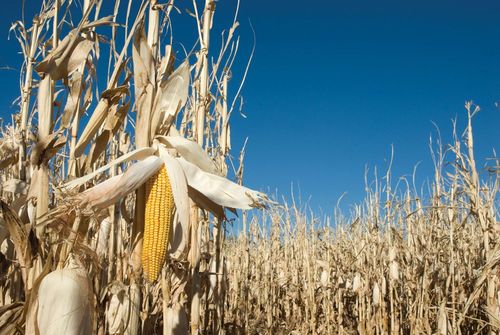USDA maintains 2023-’24 forecast for corn use in ethanol production

August 11, 2023
BY Erin Voegele
The USDA maintained its forecast for 2023-’24 corn use in ethanol in its latest World Agricultural and Demand Estimates report, released Aug. 11. Corn production for 2023-’24 is currently expected to be the second highest on record.
Despite the expected near-record corn crop, the USDA’s August 2023-’24 corn outlook is for reduced supplies, lower domestic use, smaller exports and tighter ending stocks.
According to the USDA, projected beginning stocks for 2023-’24 are 55 million bushels higher based on a lower use forecast for 2022-’23, reflecting reductions in corn used for exports, glucose and dextrose, and starch.
Advertisement
Corn production for 2023-’24 is forecast at 15.1 billion bushels, down 209 million from the July WASDE and if realized, would be the second highest on record behind 2016-’17. The season’s first survey-based corn yield forecast, at 175.1 bushels per acre, is 2.4 bushels lower than last month’s projection.
Total U.S. corn use for 2023-‘24 is cut 95 million bushels to 14.4 billion. Feed and residual use is lowered 25 million bushels based on a smaller crop. Corn used for glucose and dextrose and starch is projected lower based on observed use during 2022-‘23. Exports for 2023-‘24 are cut 50 million bushels to 2.1 billion.
Advertisement
The USDA has maintained its forecast for 2023-’24 corn use in ethanol at 5.3 billion bushels, up slightly from the estimated 5.225 billion bushels of corn used for ethanol in 2022-’23. Corn use for fuel ethanol was at 5.326 billion bushels in 2021-’22.
With supply declining more than use, ending stocks are lowered 60 million bushels to 2.2 billion. The season-average corn price received by producers is raised 10 cents to $4.90 per bushel.
Foreign corn production is revised down, with cuts to the EU, China, and Russia partially offset by increases for Ukraine and Canada. EU corn production is sharply lower with reductions to both area and yield. The largest declines are for Hungary, Romania, Germany, and Italy. China corn production is reduced as excessive wetness in key producing provinces in Northeast China and on the North China Plain reduces yield prospects. Corn production for Ukraine is higher with increases to both area and yield as timely rainfall and a lack of extreme heat during July boost yield expectations. Russia corn production is reduced based on lower area.
Major global trade changes for 2023-’24 include lower corn exports for the U.S. and EU. Ukraine corn exports are unchanged with the expiration of the Black Sea Grain Initiative. Corn imports are raised for Canada and Zimbabwe but lowered for Egypt, Vietnam, and Algeria. Foreign corn ending stocks are down 1.6 million tons to 255.1 million, reflecting declines for China, Zambia, and Russia that are partly offset by increases for Ukraine and South Africa.
Related Stories
U.S. fuel ethanol capacity fell slightly in April, while biodiesel and renewable diesel capacity held steady, according to data released by the U.S. EIA on June 30. Feedstock consumption was down when compared to the previous month.
The U.S. EPA on July 8 hosted virtual public hearing to gather input on the agency’s recently released proposed rule to set 2026 and 2027 RFS RVOs. Members of the biofuel industry were among those to offer testimony during the event.
The USDA’s Risk Management Agency is implementing multiple changes to the Camelina pilot insurance program for the 2026 and succeeding crop years. The changes will expand coverage options and provide greater flexibility for producers.
The USDA’s National Agricultural Statistics Service on June 30 released its annual Acreage report, estimating that 83.4 million acres of soybeans have been planted in the U.S. this year, down 4% when compared to 2024.
SAF Magazine and the Commercial Aviation Alternative Fuels Initiative announced the preliminary agenda for the North American SAF Conference and Expo, being held Sept. 22-24 at the Minneapolis Convention Center in Minneapolis, Minnesota.
Upcoming Events










